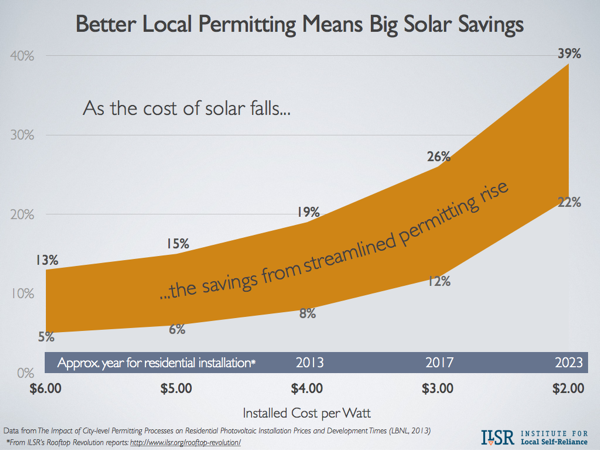Local Permitting Makes A Bigger Difference As Solar Gets Cheap
This post originally appeared on ILSR’s Energy Self-Reliant States blog
Going solar keeps getting cheaper, but most of the cost savings have come from less expensive solar panels. “Soft costs,” like permitting and inspections, are a rising share of the cost of a solar installation. Several years ago, these permits could increase the cost of a residential solar project (then around $8.00 per Watt) by 5-10% , highlighted in a 2010 study by Sunrun. But as solar gets cheaper, permitting is going to be a much bigger problem.
A recent analysis by Lawrence Berkeley Labs [pdf] illustrates the benefits of streamlining solar permitting rules: it can cut the cost of a 2011 residential solar project (at $6.00 per Watt) by 5-13%, today’s (at $4.00 per Watt) by 8-19%, and tomorrow’s by as much as 40%!
 Chip in a few dollars a month to help support independent cleantech coverage that helps to accelerate the cleantech revolution!
Chip in a few dollars a month to help support independent cleantech coverage that helps to accelerate the cleantech revolution!
The report confirms the earlier Sunrun study with a statistical analysis of actual solar permitting rules and the impact on final installation costs. It also lends credence to streamlined permitting schemes (like Vermont‘s) and to the broader efforts to improve solar permitting, like Vote Solar’s Project Permit.
Have a tip for CleanTechnica? Want to advertise? Want to suggest a guest for our CleanTech Talk podcast? Contact us here.
Latest CleanTechnica.TV Video

CleanTechnica uses affiliate links. See our policy here.


